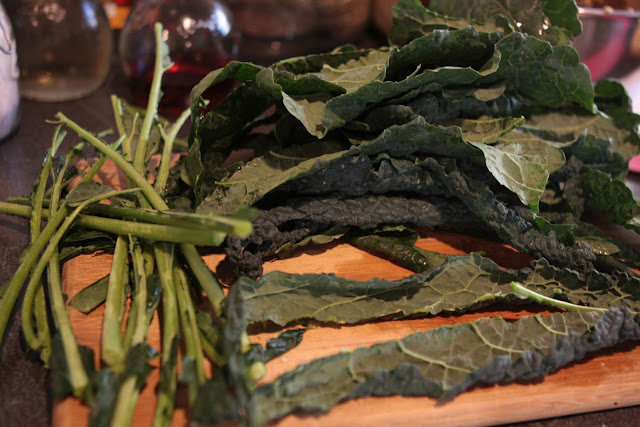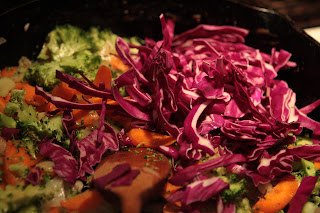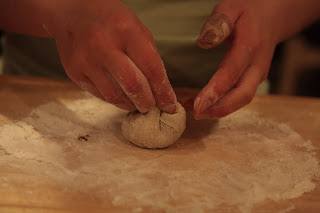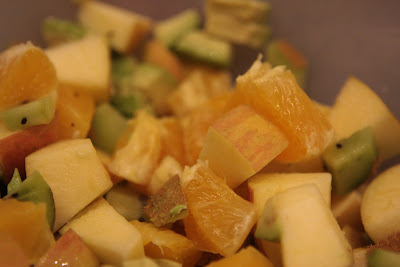Kale. . . how do you eat that? Kale just goes to prove that things that are good for you do not taste good! guess what things that are bad for you do not taste good without the right preparation, seriously try a tablespoon of sugar delicious? not even close! Somehow we all know that Kale is this amazing food and we are supposed to eat it to be healthy but I cannot afford a vitamix (yet) and I don't know how else to make it unrecognizable. Maybe you have only tried kale when it is cooked to death in a soup or smothered in some sauce after it has been boiled. . .there is a better way! it is sweeping the nation so much so that it randomly came up in conversation at the DMV last week and someone challenged me to a Kale Salad 'Cook'-Off! What am i talking about. . . learn these words: massaged kale salad.
Massaged Kale Salad
Sure we all giggle about it being 'massaged' but I am guessing another year from now and this style of salad will be so accepted as the norm that it will just be kale salad. Here is what you need:
1 bunch Kale (i prefer Lacinato aka Dion Kale)
1 Tbs rice vinegar
1 tsp red wine vinegar
2 tsp olive oil
2-3 cloves garlic
1 tsp salt
1 Tbs sesame seed
The mechanism employed to turn this roughage into a palpable salad is a form of non-cooking which uses the acidity of vinegar and some rough handling to break apart the cells and fibrous nature of the kale. Unfortunately the stems are too much fiber and so first we take the stems out
you can cut them out or just use your hands to rip out the stem, doing it for the whole bunch. The stems may be used in a lot of different ways. Not that long ago I diced them and tossed them in a curry, they work well as a hearty and healthful filler in any stir fry or soup or vegetable casserole etc. If you are keen on making veggie broth these stems are great (i know I should do that more often) or just put them in the compost and grow more kale!
The way that the stems rip out leaves the leaves in this nice V shape which makes it really easy to slice the Kale into ribbons by cutting across the V. Obviously don't be obsessive about getting ALL OF THE STEM, you just need to get the hefty part because the stems will break down some in the vinegar bath.
For my vinegar bath I like to use a combination of Rice vinegar and red wine vinegar. The high acidity and soft flavors add a nice aroma without overpowering the nature of the kale. Toss the kale with the vinegar and the salt and let it sit for a minute while the garlic gets diced.

I use raw garlic. . . yes raw garlic, the same trick that mellows out the kale works on the garlic but I still dice the garlic extra fine, not only so I avoid a big garlic bit surprise but also to spread that tasty garlic flavor all over.
Now the massaging . . .which I am realizing right now is more like brutalizing. Toss in the garlic, olive oil and the sesame seeds and then start really working the kale. If you are having an angry day feel free to punch the kale but usually I go with the crushing and mixing motion. Take up small hand fulls and crush as hard as you can, repeat this taking from the bottom of the bowl so the vinegar/garlic/salt dressing gets mixed through the salad
At this point give it a taste and determine if you want more salt or garlic or vinegar but don't expect it to taste perfect yet. The vinegar needs time to work and i would suggest a minimum of 30 minutes before serving this salad.
The good news is that is it! that is the basic recipe of course the fun is in taking a basic recipe and adding some flourish. Often I will go for a spicy savory and toss in some oregano, thyme, basil, black pepper etc and of course more sesame seeds (what can I say). This salad was being made while I had a bit of a sweet tooth and so I added some extras accordingly:
3 pieces candied ginger
1/2 avocado
1/2 orange
1 tbs sesame seeds
1/4 C walnuts
Dice it all up and toss the salad once more and enjoy! MY salad came out a bit overly moist this time because I went over board with the olive oil and I am always surprised by how much this raw salad shrinks down. The whole bunch which previously filled my mixing bowl un-cooks down to nearly 1/3 its original size . . .and that is after adding the extras. If you are planning on feeding more than 2-3 people get a second or third bunch of kale, or use purple cabbage as a nice filler, the point is plan on the volume reducing a lot. . .and plan on people wanting to eat a lot of this!










































